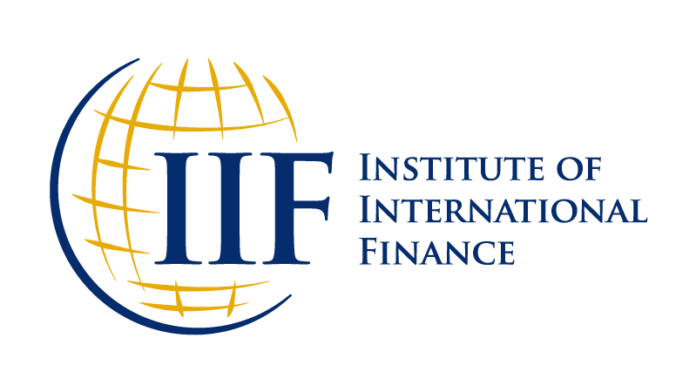COVID-19 elevates Balance of Payments challenge in Nigeria, Ghana others
- SSA faces challenges in deficit financing amid COVID-19 shock, commodity price collapse
- Lower commodity prices will sharply reduce exports in many countries
- Dependence on tourism and remittances will also have a negative effect
- Current account deficit financing is going to be challenging due to risk-off sentiment
- Multilateral funding can cover some gaps, but solvency is an issue as well
The Sub-Saharan Africa countries are faced with challenges in deficit financing amid rising cases of COVID-19 and commodity price collapse, the Institute of International Finance has stated.
In a recent report, IIF stated that current accounts in most of Sub-Saharan Africa countries are expected to be in deficit in 2020.
According to the Institute, COVID-19 has elevated balance of payment challenges in Nigeria, Ghana and other countries in SSA region.
It noted that the outlook for the financing of these deficits will be more challenging than in the past.
“External support—from the IMF and other multilateral organizations—should help, but policy adjustment is also needed, particularly in countries reliant on short-term portfolio flows”, IIF explained.
According to the report, IIF stated that external deficits will likely persist despite significantly weaker domestic demand and import compression.
In April, the IIF had stated that there will be sharp growth slowdown in the SSA region.
The Institute had explained that significant output contractions in the two largest economies—2.9% in Nigeria and 4.7% in South Africa—mean that the region as a whole will slip into a recession for the first time since the early 1990s
“Although SSA countries export a diverse range of commodities, prices for most major exports have fallen in recent months”, IIF stated in the report.
The Institute held that Oil exporters such as Angola, Nigeria, Gabon, and Cameroon have experienced the largest declines in overall export prices.
It stress further that dynamics have also been very unfavorable for countries with a heavy reliance on coal (Mozambique), copper (Zambia, DRC), and gas (Nigeria, Mozambique, Angola).
The report stated that Gold exporters like Burkina Faso, Mali, Ghana and Tanzania on the other hand, have benefited.
Meanwhile, export volume data show that the region as a whole failed to gain market share following the post-GFC bounce back and appears to have stagnated.
IFF stated that as agriculture accounts for a significant share of economic activity in many Sub-Saharan African countries, additional factors will weigh on export volumes.
“These include disruptions to global trade and value chains due to COVID-19 as well as locust infestations in East Africa, notably Ethiopia, Kenya.
Currency adjustments may cushion the overall impact of these developments, the Institute remarked.
It however pointed out that fixed or semi-fixed exchange rates present a major limitation.
SSA’s largest economy, Nigeria, is facing significant external stress, primarily as a result of the collapse in oil prices since the start of the year.
The Institute stated that despite sharp import compression, it expects the current account deficit to remain large at 3.4% of GDP in 2020.
At the same time, debt amortization has been rising, while capital flow dynamics deteriorated in second half of 2019.
Zambia’s current account will likely be in deficit this year as prices for the country’s most important export—copper (3/4 of total merchandise exports in 2017) — have fallen by roughly 15% year-to-date.
Significant upcoming debt repayments will also contribute to continued reserve losses, it stressed further.
The Institute explained that Ghana was performing well before the COVID-19 crisis, with an appreciating currency and successful Eurobond issuance.
However, despite the gold rally, overall export price dynamics have deteriorated due to falling oil prices.
The country is also reliant on tourism and remittances, the Institute added.
It said while Kenya entered the crisis with healthy buffers, including growing reserves, it will face challenges going forward given its reliance on agricultural exports, tourism, and remittances.
Moreover, IIF said the fiscal deficit reached just under 8% of GDP before the COVID-19 shock, and debt to GDP stood at over 60%.
The Institute also noted that countries with important national airlines, which includes Kenya and Ethiopia, are likely to suffer disproportionately from reduced tourism across the SSA region.
It explained that with current accounts in deficit across the region in recent years, many countries have relied increasingly on short term portfolio flows for financing.
“For Ghana, this was an explicit step away from reliance on multilateral funding and towards market access”, IIF reckoned.
FDI is still an important source of funding for the region, and less volatile than portfolio flows, the Institute highlighted.
However, IIF stated that in SSA, it is often dependent on the outlook for commodity prices.
IIF stated that financing available through the IMF, World Bank, and African Development Bank could be enough for some to manage a brief hiatus in FX inflows and avoid large reserve losses.
“While we do not expect a substantial improvement in market access in the coming months for sub-investment grade issuers,
“…we believe that maintaining good relationships with investors is critical for countries with reliance on Eurobond markets and
“…where bond holders represent a large portion of the creditor base, including Côte d’Ivoire, Ghana, Nigeria, Senegal, and Zambia”, the Institute noted.
COVID-19 elevates Balance of Payments challenge in Nigeria, Ghana others














